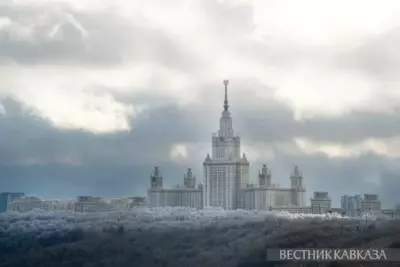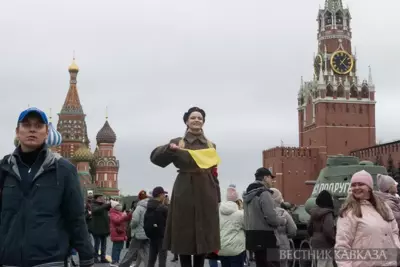There is fierce fighting for Palmyra in Syria between government troops and terrorists. The terrorists had managed to thwart the efforts of the Syrian army to take down the flag of the terrorist group Daesh, banned in Russia, from the hill where the ancient castle of Palmyra is located. The black flag of the terrorists was demonstratively burned. However, the troops cannot install the Syrian flag instead of the terrorist’s one: the enemy began firing at the hill from a tank, and with anti-aircraft shells and mortars. It is impossible to gain access to the citadel, the main entrance is destroyed, armed fire contithere.
Today fighting continues throughout Palmyra, the government forces attack not only from the historical part, but also from the north-west and south-east.
Militia of the group ‘Desert Hawks’ occupied the residential area under the citadel. "After we based ourselves on the hill where the fortress is located, our soldiers occupied a residential area under the hill. The fighters of Daesh continue to fire at our positions from tanks and anti-aircraft installations. Indiscriminate mortar fire is also carried out,’’ the commander of the assault detachment ‘Desert Hawks’ Abu Hamza said
In another part of the city government troops were heading towards the military airfield. Fierce battles are ongoing at a distance of one kilometer from the airbase: the terrorists are fiercely resisting attack.
"Those fighters that remained in the city are likely to lead the fire to cover the retreat. While there is no exact data, whether the terrorists’ retreat continues, or those who are in the city decided to keep a tight defense,’’ RIA Novosti quotes Abu Hamza as saying.
On Thursday on March 24th militia fighters stormed the hotel complex ‘Semiramis’ and a few nearby buildings. The night before, they had captured the hill where the fortress is located, the last of the strategic heights, which remained under the control of Daesh.
The Commander of the.‘Desert Hawks’ Mohammad Jaber explained yesterday that the attack "is slow", as previously on the outskirts of the city the terrorists planted mines, disguised them along roadsides, on the slopes and in the buildings.
The actions of the government army and militias in Palmyra did not cause serious damage to the monuments of the ancient city, the director general of the agency for the protection of ancient monuments of Syria, Maamun Abd al-Karim, said.
"Large parts of the city of Palmyra have been liberated with very little destruction of sites. The liberation carried out by the Syrian army and those who supported it was carried out very professionally,’’ Sputnik quotes him as saying.
Al-Karim said that, judging by the footage from the scene, we can hope that despite the actions of the terrorists, in general, the position of the monuments is under control. So the outer walls of the temple of Bel, the Agora, Straight Street and the ancient theater have remained.
"But we still have to check everything on earth, in order to understand the damage inflicted by the terrorists. We hope that the destruction will be minimal and Palmyra will live,’’ he stressed.
The State Agency for Protection of Monuments led by the art historian plans to start work in Palmyra in April, when the city will be completely safe. "Experts will examine the situation on the ground, the destruction will be estimated,’’ he said.
The work will be carried out in three stages. On the ground, according to al-Karim, it is necessary to support the unstable objects, the second involves the restoration of most of the monuments, the third, the temples of Bela and Baalshamina destroyed by the terrorists will be restored. The expert said that according to international standards, the latest measures may be used only in exceptional cases.
"We are committed to fully restoring two churches, the Arc de Triomphe and the tower-tomb.In this work we will follow international rules, cooperate with UNESCO, given that Palmyra is under its supervision,’’ he explained.
Palmyra [Arabic name Tadmor] is famous for its ancient cultural monuments included on the UNESCO World Heritage List. The city fell into the hands of Daesh terrorists in May last year, after which reports of the deliberate destruction by the fighters of the ancient sculptures and temples have repeatedly appeared. The terrorists destroyed the temple of Baal Shamin and the famous Arc de Triomphe.
Palmyra is also significant in strategic terms: by losing it, Daesh will lose control of a fifth part of the occupied territories of Syria and the government forces can launch an attack on the so-called capital of Daesh – the city of Raqqa.






